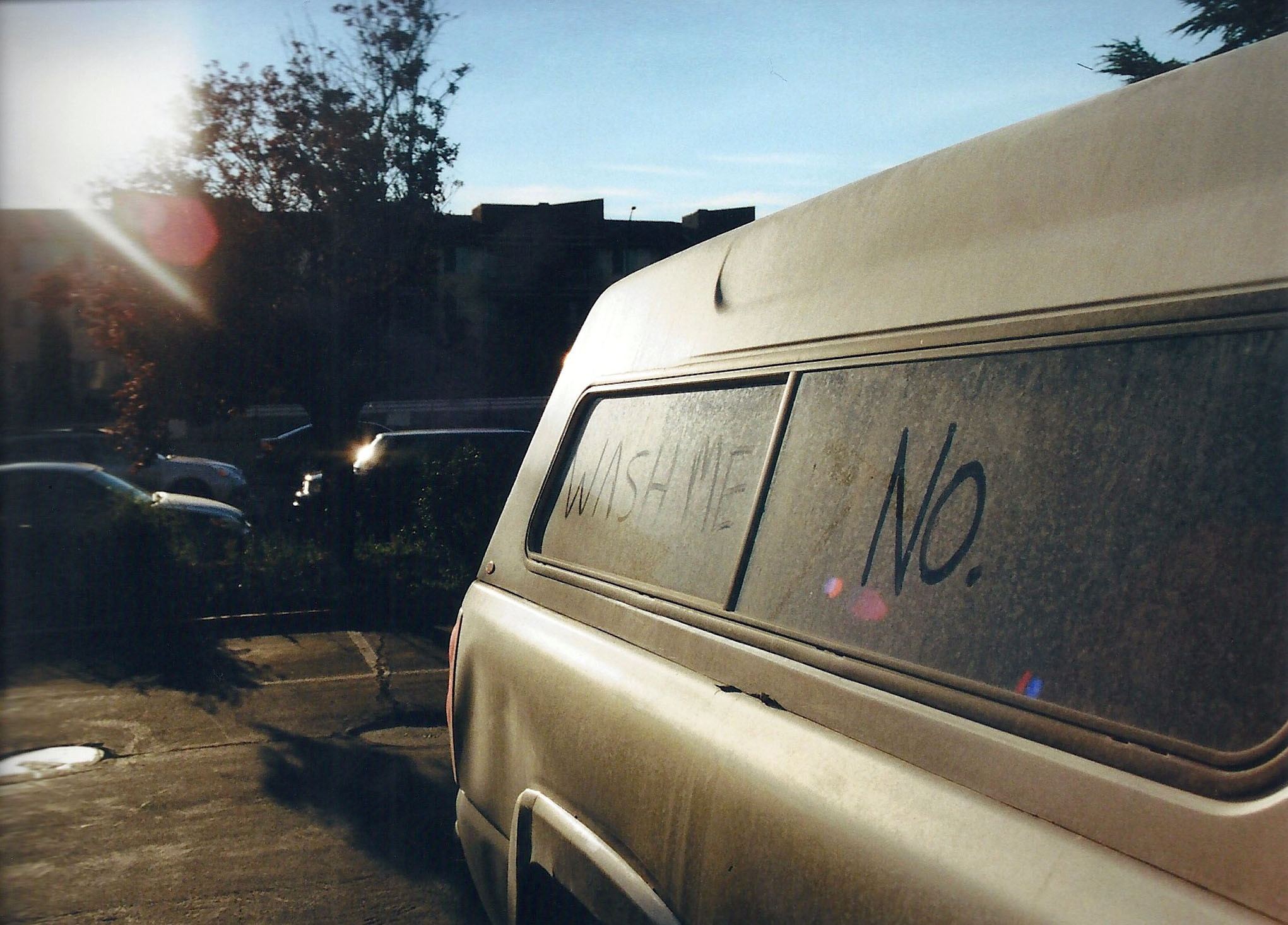
These hot dogs sticking out of a bin at Street Vibrations are cooler than all of us. Photos by Mike Higdon.
Taking one photo a day on film for 365 days is an emotional roller coaster. But I’ve learned a few lessons so far.
Lesson 1: It’s OK to suck
Some days, snapping a fantastic moment or meeting an amazing person is deeply rewarding. Some days, I cannot wait to drive around town to find one great shot.
Other days I’ve been writing news stories, taking photos for work all day or sitting on the couch relaxing and I deeply dread and regret this project (someday you’ll see Sept. 8, 2016, “I hate this duck”).
But the worst days are when I forget to take my camera with me before I jump in the car or go for a walk, because the missed moments are worse than taking a bad photo. I curse myself for every single shot I see playing out before me that I cannot capture because my camera is somewhere else screaming, “YOU FORGOT ME AGAIN, MORON!”
But, it’s okay to suck and be a moron sometimes, as long as I make it up to myself tomorrow.
In the end though, not every picture or every week or every month will be good. Normally, photographers will cull those shots so no one will ever see them. But in this project, I cannot. So in a sea of 365 photos on a wall, the awful ones must make the good ones shine.

Aurelia Holman avoiding Cali hunting for hot dogs. Photo by Mike Higdon
Lesson 2: Waiting a month to see the month is really hard
Picking film for this project was a deliberate choice to oppose instant gratification, digital toning, machine-gun shooting and self-editing because I do so much of that every day already. The purpose is to improve by forcing myself to make every shot count. And that makes this so much harder.
Throughout each month, the stress of not knowing how a photo turned out; if the lighting was right; if the shot was in focus; if the film is safe, really takes a toll.
The moment I pick up the prints, I feel relief and a sense of accomplishment. It reminds me that I don’t suck as much (see: Lesson 1). It helps me get through the next month.
Each roll helps me learn to use the camera better, too. Each roll is full of better photos than the last. It helps me remember stories of my year. It helps me see if I’m taking too many of the same thing (in my caption list there’s a line for “Is there a dog in this photo?”).

Afternoon light through the RGJ lobby. Photo by Mike Higdon
Lesson 3: Not every photo has a story
As a journalist, I’ve largely insisted my photos need to tell you something or be of a person. I spent the first few months trying to force everything into the story of Reno while also removing myself from the equation.
But most people told me they’d rather see the story of my life in Reno — a jarring idea.
After watching the Reno Instagrammys winners and thinking about the place where photojournalism and art intersect, I’ve started trying new things. I’ve also started thinking about ways to add my own emotion to an image. I don’t know how to do that yet, but it’s something new to experiment with.

Kaylani sits in front of the Lucky Motel on Fourth Street. “Just hustling, trying to make some money,” she said. Photo by Mike Higdon
Lesson 4: Photos of vulnerable people should not be taken lightly
Photos of homeless, poor, LGBTQ, minorities or people suffering have always held our attention. They provide a window into a different world. They evoke emotion. They tell stories of the people who society and institutions forgot, left behind or neglected. They create movement in a community or advocate for social change when done well and used correctly.
But in many ways the people in them are being used for something. Sometimes good, sometimes bad.
I decided in July that I would not use photos of these people for anything other than to show that they exist in Reno and that I encountered them and they are part of my world as much as anything else.
I’m not using them for a social agenda. But I also will not avoid them.
But most of all, I won’t take their photo without permission and without finding out who they are first. To be clear, I don’t need anyone’s permission in a public setting: minor or otherwise. The law guarantees my right to take your photo for editorial or artistic purposes so long as I do not intend to sell it.
But that also doesn’t mean I have to be so brutal.
Any photos of people in these marginalized groups will be taken with me standing in front of them, talking to them, learning their names, what they’re doing and how they got there. No photos of these people will ever be taken from a distance, in secret.
Mike Higdon is a journalist who writes, photographs, videos and designs. He lives in Reno, Nevada and enjoys urban life and telling stories about it.
